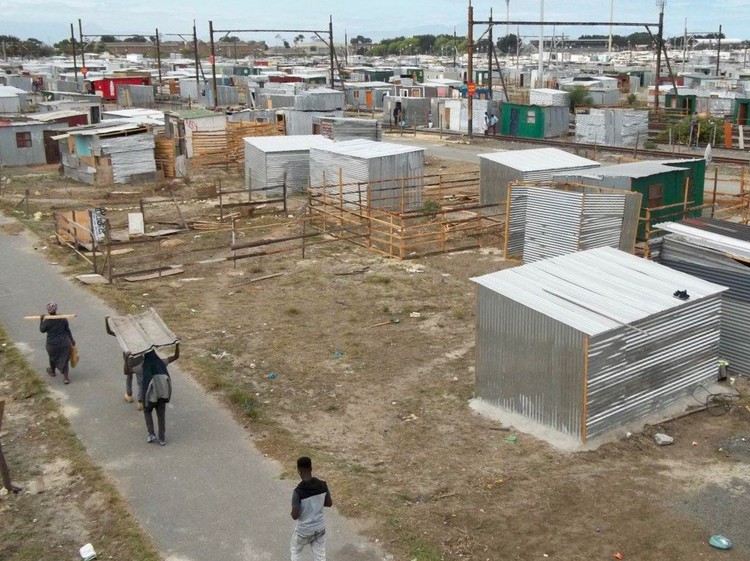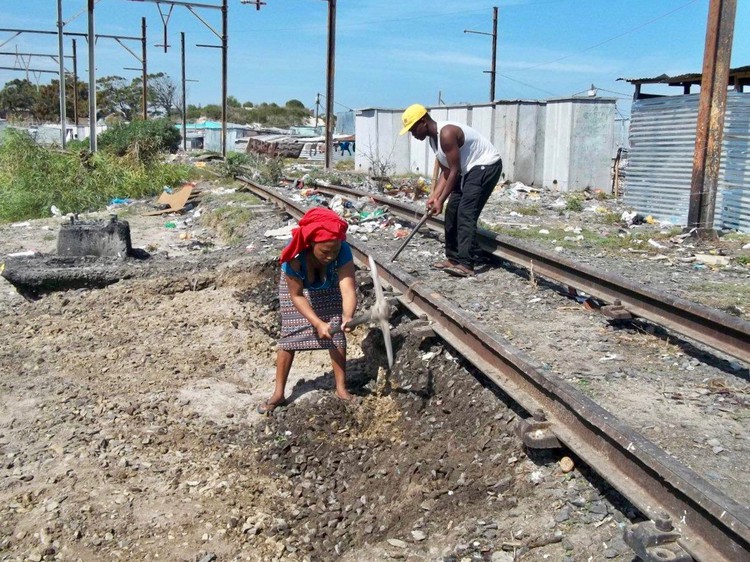
Low-wage poverty is highly associated with unstable work such as in the informal sector.
Shutterstock
Paid employment is generally considered the predominant and most sustainable way of pulling people out of poverty. But the past two decades have seen a global rise in the complex phenomenon of the working poor. South Africa is no exception.
This delink between paid employment and poverty reduction is a major challenge for the government. It means that attention must be given to two things: rapid job creation, and also the creation of decent jobs.
While one may think that being employed suggests the person is immediately pulled out of poverty, this is not always the case. Finding a job does not guarantee someone will receive remuneration that is high enough to cover their basic needs and be relatively secure financially. In some cases, workers reluctantly only work part-time after failing to find full-time work.
Some workers are paid wages below the amount that’s necessary to maintain a decent living standard. They are also not entitled to health or retirement benefits. Low-wage work is also associated with poor working conditions and job insecurity. These include poor health and safety standards, discrimination and excessive work hours.
In other words, for some workers employment no longer guarantees significant poverty reduction. Some workers remain poor because wages are too low to lift them and their families out of poverty.
Main findings
Comprehensive information on the extent of low-wage working poverty in South Africa wasn’t available until our recently published study. We examined the data from the first four waves of the National Income Dynamics Study (NIDS), which took place between 2008 and 2015. NIDS is South Africa’s first national household panel study.
We found that while low-wage poverty probability declined during the 7-year period, in 2015 nearly 20% of workers were still identified as low-wage poor employed. This downward trend is similar to what was found by a 2015 study for the 1997-2012 period, though that piece of research focused on working poverty and didn’t take the low wage threshold into consideration.
When it comes to demographics, low-wage poor were identified as predominantly women (slightly above 50%), Africans (90%), 38 years old on average, without 12 years of education. On average there were five members per household, and two of them were working.
Most low-wage poor were involved in elementary occupations. They were street vendors, domestic helpers and cleaners, and garbage collectors. And nearly 75% of this group were in the informal sector, which is associated with a lack of job security and benefits. This finding is concerning, given the fact that the informal sector only contributes about 7% of the country’s GDP.
What should government do?
There are ways for the government to address these issues.
Policy is a key area where changes can be made. The government should focus on policy that provides affordable quality education and skills training to previously disadvantaged communities. Moreover, education and training programmes should focus on skills and competencies demanded by the labour market.
Low-wage poverty is highly associated with the unstable work environments and insecurity that are experienced by workers in the informal sector, and workers with low-skilled occupations like domestic workers and street vendors. Policy prescriptions should therefore aim to promote economic growth and infrastructure development within the informal sector. They should also focus on increasing awareness and enforcement of labour regulations that protect workers in low-skilled or elementary occupations.
Speedy infrastructure development also helps to pave the way for the creation of more and better jobs associated with higher wages and improved working conditions.
It’s also important that there’s a focus on creating quality jobs and transforming existing unstable, low-paying jobs to more stable work environments that pay workers higher earnings. This involves improving the transition of workers from the informal to the formal sectors.
Government and the private sector should also provide small and informal business owners with easy access to financial and organisational support. These business owners need skills and knowledge about everything from finances to supply chain processes and customer management to help them run and grow their businesses.
There should also be an increase in the awareness of minimum statutory employment conditions among elementary occupation workers and employers, together with the implementation of effective mechanisms to monitor and enforce compliance.
Last but not least, increasing the national minimum wage for all sectors may be a useful, if somewhat contentious approach. Using the currently proposed minimum wage of R3 500 per month, the low-wage poverty rate is somewhat higher (35% in 2008 and 24% in 2015, compared to 26% and 19% respectively using the original lower-amount threshold adopted in the study).
Some workers argue they cannot meet their basic needs with the currently proposed minimum wage (of R3 500 per month). But a higher minimum wage helps improving their productivity and turnover. On the other hand, some employers claim they cannot afford an increased minimum wage without running the risk of retrenching workers and replacing them with cheaper capital. In this case, the state may intervene by assisting firms with special taxation benefits, wage subsidies and training opportunities for workers.
This is an extract from the journal article titled “Employed yet poor: low-wage employment and working poverty in South Africa”, which the writer co-authored with Jade Feder, an Economics Masters graduate at the University of the Western Cape.
Derek Yu, Associate Professor, Economics, University of the Western Cape
This article is republished from The Conversation under a Creative Commons license.









